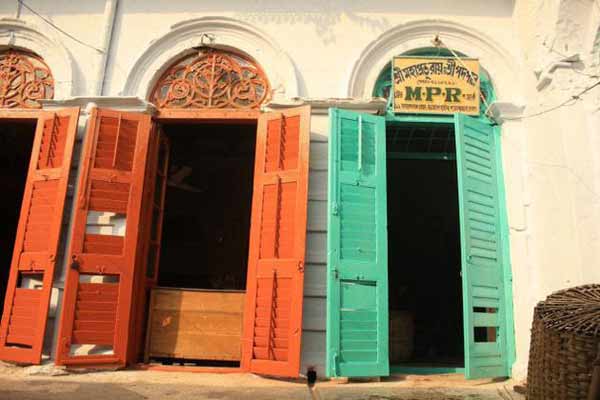
Dhaka, Bangladesh (BBN)-There’s no avoiding it: Dhaka is an ugly city.
Its streets are constantly clogged, the glacial pace of its traffic set by an army of cycle-rickshaws half a million strong, reports The Hindu.
Buildings rise from narrow plots, leaning wearily against one another.
The first time I arrived was on one of the big steamers that carry passengers upriver from the south, where I’d been reporting for a week, and disgorges them onto the old city’s haggard, sagging jetties in the dark early hours of the morning.
The chaos and noise and heat of the riverside pervade the city.
Dhaka makes Mumbai look like Paris- until, that is, you look a bit closer.
Masterpieces of modernist architecture hide among the morass of brick and concrete.
In neighbourhoods like bohemian Dhanmondi, young people stroll along the lakefront.
Music and literary and arts festivals crowd the calendar. Dhaka is one of the world’s densest and fastest growing metros; it is also emerging as one of South Asia’s most important hubs for art and design.
This emergent Dhaka has been a long time in the making. Dhaka hosted the first Asian Art Biennial- the continent’s first- back in 1981, just ten years after Bangladesh earned its independence, and long before the global explosion that has brought Biennials to cities across the globe.
The Chobi Mela, the largest photography festival in Asia, began in 2000 and recently completed its 8th edition.
In February, the city will host the third edition of the Dhaka Art Summit, the largest non-commercial art event in South Asia.
And the many festivals and events hosted by the 30-year-old Bengal Art Foundation are as vibrant as any on the Subcontinent.
“Art is in the heart and soul of Bangladesh,” says Abul Khair, the founder and chairman of the Bengal Foundation.
Where other nations in South Asia were formed according to religion or geography or ethnicity, Bangladesh’s liberation from Pakistan resulted directly from a desire to institutionalise its language- and, by extension, its rich intellectual and artistic culture- within an independent nation-state.
“Even for a foreigner, it’s obvious that cultural questions are tied closely to political questions in Bangladesh,” says Aurelian Lemonier, an architecture curator from the Centre Pompidou in Paris who will be heading up the architecture programme at the Art Summit in February.
“This is the essence of modernism in Bangladesh.”
Exploring that tradition is not always easy.
Though the Louis Kahn-designed Parliament- widely considered the American master’s magnum opus- has become a kind of national emblem, “the density of Dhaka,” Lemonier says, “makes it difficult- it blurs things.”
The same is largely true for the city’s contemporary art, which has drawn attention from collectors, gallerists, and museums around the world, but lacks local venues.
Yet the city’s constantly expanding calendar of cultural events- many of which are free- has made this otherwise impenetrable city increasingly accessible for visitors.
Ashwani Nayar, General Manager for the newly opened Dhaka branch Le Meridien, told me that the hotel’s organised tours of the city’s architectural wonders have left daily, proof of a growing interest even among business travellers who previously came to Dhaka only to source garments or communicate with local craftsmen.
For Bangladesh, culture has become an important tool for cultivating an international image that goes beyond poverty, disaster, and the rising tide of fundamentalism. Khair told me the Bengal Foundation’s “main objectives are to conserve tradition, allow diversity, evolution and growth from within and to uphold a positive image of Bangladesh by disseminating information about its cultural wealth.”
Shahidul Alam, one of Bangladesh’s most important documentary photographers and founder of the Chobi Mela, described his festival as “an international platform through which Bangladeshi photographers could reach out to photographers, editors, curators and critics across the globe.”
Nadia Samdani, who, along with her husband Rajeeb, runs the Samndani Art Foundation, which organises and sponsors the Art Summit, told me that, through the Summit, “We wanted to create a platform for South Asian Art. We wanted the world to come and see.”
The world has. Earlier this year, the Samdanis were included in ArtReview magazine’s Power 100 List, credited with “plac[ing…] Bangladesh firmly on the art world map.”
For the third edition of the Summit, the Foundation has brought in curators from the Pompidou, the Tate, the Rubin, the Guggenheim, and the Zurich Kunsthalle.
Though the city has a long history of artistic expression, Dhaka, Alam told me, “is now a vibrant place with an eclectic and open arts scene.”
The artists and architects, writers and musicians, gallerists and philanthropists who call Dhaka home are together fashioning a nation that will be known for its creative output as much as its industrial productivity.
“In India in the 60s, architecture gave you that sense of a nation working toward something. Now you have that in Bangladesh,” Lemonier told me.
Dhaka, as the centre of that nation, is the font of that energy.
“When I go to Dhaka, I don’t see a place that’s poor,” he went on. “I see a place where a lot of things will happen.”
Michael Snyder is a Mumbai-based freelance food, travel, and culture journalist.
BBN/SK/AD